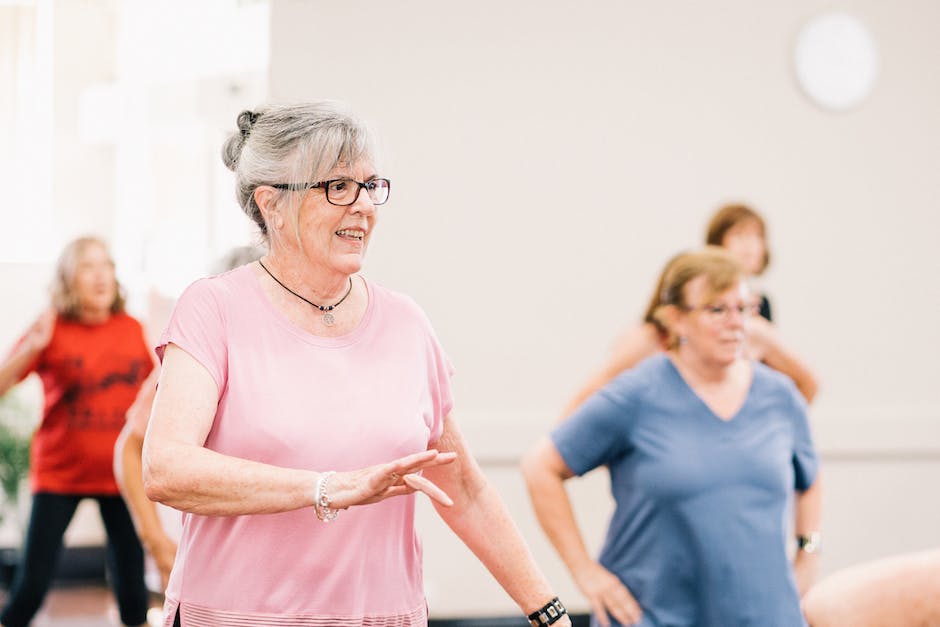Childhood obesity is a growing global health challenge, setting a distressing trajectory for the lifetime health of millions of young individuals. Far from merely an issue of aesthetics or public perception, pediatric obesity has profound implications on the physical, emotional, and social wellbeing of children today. The issue garners increasing attention in both the medical world and the public sphere. Among the myriad factors contributing to this complex health crisis, physical activity—or lack thereof—plays an integral role. The following exploration will uncover the role of physical activity in managing, and more critically, preventing childhood obesity. Rooted in the scientific understanding, this exploration will also focus on the practicality of the solutions, aimed at empowering schools, parents, and communities with actionable strategies.
Understanding Pediatric Obesity
Understanding Pediatric Obesity
Pediatric obesity is a significant public health issue that affects children and adolescents. The condition is defined as abnormal or excessive fat accumulation that may impair health. A BMI above the 95th percentile for children of the same age and sex signals obesity. Recent data suggests that about 18.5% of children and adolescents aged 2-19 years in the United States are obese. This rate has more than tripled since the 1970s and is a concerning trend. Obesity, if not addressed in the childhood stage, can extend into adolescence and adulthood, paving the way for various health issues.
Causes and Implications of Pediatric Obesity
There are many contributing factors to obesity, including genetic, behavioral, and environmental influences. Among these, sedentary lifestyle and unhealthy food habits contribute to a major share of the problem. The implications of pediatric obesity are vast, ranging from physical issues like insulin resistance, type 2 diabetes, high blood pressure, heart disease, and sleep apnea to psychological impacts such as low self-esteem and poor academic performance.
Physical Activity and Pediatric Obesity
Physical activity plays a key role in preventing and resolving pediatric obesity. Exercises, sports, dance, and other physical activities help to maintain a healthy body weight by burning calories and developing muscles. Physical activities also aid in enhancing metabolic rate, which helps in weight management. Furthermore, engaging children in regular physical activities can promote cardiovascular fitness and strengthen bones, along with curtailing the onset of chronic diseases in their future.
Promoting Physical Activity
Obesity prevention strategies should include promoting an active lifestyle from a young age. This could involve ensuring children get at least 60 minutes of moderate to vigorous physical activity each day. Activities could include gym classes, daily walk or bike rides, active play during recess, and participation in organized sports.
Barriers to Physical Activity
Despite the marked benefits, several barriers exist which inhibit physical activity among children. Limited access to safe places for physical activities, academic pressures leading to reduced playtime, and an increasing trend of screen time are some of the key obstacles.
Community and Policy Level Intervention
Community-based programs and policy changes that prioritize physical activity can play a significant role in addressing pediatric obesity. Policies such as including compulsory physical education in schools, improving availability and access to public parks, and creating safe routes for walking or cycling can gradually change sedentary behavior patterns among children.
Keeping Track of Progress
The wellbeing of children can be significantly enhanced by comprehensively monitoring and adjusting activity levels to ensure weight management. This involves regular medical check-ups where weight and height are critically assessed to determine the Body Mass Index (BMI). Parents, medical personnel, and educational institutions must collaboratively partake in this indispensable process.

The Importance of Physical Activity
Significance of Physical Activity in Preventing Pediatric Obesity
Childhood obesity has become a prominent health crisis in the United States, as reported by the Centers for Disease Control and Prevention (CDC), affecting approximately 1 in every 5 children. The role of physical activity in the prevention of pediatric obesity is increasingly vital; it ensures weight regulation and promotes the general growth and development of children. Engaging in physical activities not only reduces the chances of children becoming overweight but also fosters healthier muscle and bone development.
Physical Activity and Physical Well-being
Active children are less likely to become obese and are more likely to continue practicing a healthy lifestyle in adulthood. Regular physical activity helps maintain a healthy weight, reduce the risk of developing obesity-related diseases such as diabetes, and strengthens bones and muscles. Compelling evidence has indicated that physical activity plays a central role in the prevention of weight gain, the reduction of fat mass, and the maintenance of lean mass.
Physical Activity and Mental Well-being
Active children not only enjoy better physical health but also superior mental well-being. Physical activity is correlated with improved academic performance, better concentration, memory, and behavior. It also boosts children’s mental health, reduces anxiety and depression symptoms, and positively affects their emotional well-being.
Physical Activity and Social Well-being
Physical activities provide an excellent platform for social interaction, team spirit, and leadership traits among children. Sports and games, for instance, enhance children’s communication skills, enabling them to learn about cooperation, competition, and values of sportsmanship.
Recommended Amounts and Types of Physical Activities
The World Health Organisation recommends at least 60 minutes of moderate to vigorous physical activity every day for children aged 5-17 years. This physical activity should be a combination of endurance, strength, flexibility, and balance exercises. For children 6 to 17 years old, the CDC recommends at least an hour of aerobic activity per day, including vigorous-intensity activity at least three days a week.
Toddlers (1-2 years) and pre-school age children (3-5 years) should be physically active throughout the day, and structured activity like games could help them develop motor skills. School-age children benefit from both organized sports and free play activities like biking, swimming, or games of tag. Aerobic activities, muscle-strengthening, and bone-strengthening activities are suitable for teenagers and should be incorporated into their daily routine.
Making Physical Activity Fun
To encourage regular physical activity, it’s important to make sure it’s fun for children and adolescents. Activities should be age-appropriate, enjoyable, and offer variety. The aim is not to make these activities a chore, but an integral, enjoyable part of everyday life. Having a regular family exercise time, playing outdoor games, or encouraging children to join sports teams can make physical activity an enjoyable practice.
Role of Parents in Encouraging Physical Activity
Parents and caregivers lead by example. Parents who are regularly active or participate in sports inspire their children to do the same. Ensuring that children have a safe environment for physical activity, removing restrictions to active play, and incorporating physical activity in family events are ways to promote an active lifestyle.
Childhood is a pivotal time in which to instill healthy habits, with physical activity playing a central role. It equips children with the tools to maintain their health and happiness, both in their immediate life and going into adulthood. Engaging in physical activity on a regular basis is essentially planning for the child’s future, paving the way for them to mature into robust, healthy, and confident adults.

Physical Activity and Energy Balance
Getting to Grips with Energy Balance and Obesity
Comprehending the notion of ‘energy balance’ is paramount when it comes to the prevention of pediatric obesity. In essence, energy balance describes the equilibrium between calories taken in through food and beverage consumption and calories burned off via physical activity and metabolic functions. To boil it down, a child will gain weight or, if sustained, become obese if they consume more energy than they expend. Conversely, energy expenditure exceeding energy intake will result in weight loss.
Physical Activity and Energy Expenditure
The role of physical activity in maintaining this energy balance should not be underestimated. An integral facet of energy expenditure is physical activity. It goes beyond formal exercise or sports participation – it includes all movement that uses energy, such as playing, walking, or even performing household chores.
Boosting the level of physical activity a child partakes in can increase energy expenditure and tilt the energy scale towards weight loss, or maintenance of a healthy weight. The key to preventing pediatric obesity, then, is to encourage children to be more physically active.
Relevance of Physical Activity in Pediatric Obesity Prevention
Physical activity aids in the prevention of obesity in children in several ways. Firstly, it aids in the regulation of energy balance by increasing total energy expenditure, which includes basal metabolic rate and energy expended in physical activity.
Secondly, regular physical activity helps enhance the basal metabolic rate (the amount of energy your body needs to function at rest). For instance, exercise, particularly that which builds muscles, can increase the quantity of energy burned even when the body is at rest.
Thirdly, physical activity can influence appetite control and satiety, discouraging overeating. It has been suggested that physical activity may stimulate specific alterations in the hormones that regulate appetite, inducing a feeling of fullness.
Fourthly, consistent physical activity promotes the development of lean muscle mass. More muscle and less fat leads to a higher metabolic rate, further contributing to energy expenditure.
Promoting Physical Activity among Children
Encouraging regular physical activity in children is crucial to maintain a healthy energy balance that prevents the onset of obesity. Schools, parents, and community programs can all play pivotal roles in promoting physical activity.
Including daily physical activities like sports, dance or simple playtime can have long term benefits in preventing obesity. Not to mention crafting physically active recreational outlets and ensuring that school-based physical education classes are entertaining, varied, and inclusive for all children.
Conclusion
Conclusively, the north star of preventing pediatric obesity lies significantly in physical activity, as it helps establish a healthy energy balance. Crystal clear evidence suggests that fostering regular physical activities in children stretches beyond mere fitness or ability; it is an essential element in maintaining a healthy weight and staving off obesity.

Strategies for Increasing Physical Activity in Children
Amplifying Physical Activities in Children
The role physical activity performs in curtailing pediatric obesity, a pressing national health issue, is both pivotal and consequential. Regular physical activities in children not only serves as a tactical, effective approach to countering this escalating issue, but also in enhancing their overall well-being.
Schools have proven to be an ideal avenue to escalate physical exercise in children. Nationwide, schools have kick-started programs and adopted policies encouraging physical activities. These measures encompass extended recess times, physical education classes, and the integration of ‘active classrooms’ that merge movement with academics. Other innovative approaches by schools include standing desks, activity timeouts between lessons, and even walking sessions during meetings, all aimed at elevating the daily physical activity quotient of students.
‘Let’s Move Active Schools’ stands as an efficacious template supporting this approach. This integrated school program empowers stalwarts like physical education teachers, classroom teachers, principals, administrators, and parents to mold an environment conducive to active learning and movement.
Parents’ Role in Preventing Pediatric Obesity
Parental involvement is another vital component of boosting physical activity in children. Parents can encourage their children to be physically active by modeling active behaviors, limiting screen time, and promoting outdoor play activities. Another practical method can be making family outings and vacations active and engaging, such as hikes or bike rides.
Active afterschool programs are leading the way in many communities across the country. These programs offer dance, sports, and other physical activities that can make exercise fun and engaging for kids. Initiatives like the ‘Noble Afterschool Program’ in Boston have had success, where health and wellness professionals provide regular physical activity and nutrition education to participating students.
Creating Active Communities
Communities can also play a pivotal role in facilitating physical activity. A safe, pedestrian-friendly community with parks, playgrounds, and bike lanes can provide ample opportunities for children to be active. Communities can organize local sport events, construct public recreational centers, or implement safe routes-to-school programs to increase youngsters’ daily physical activity.
One laudable example is the Safe Routes to School (SRTS) program implemented in several states. This program encourages and enables children to walk or bike to school safely, providing them with regular physical activity and promoting a healthier lifestyle.
Adopting Active Lifestyles in Children’s Daily Routines
With a focus on preventing pediatric obesity, it’s crucial to instill physical activity as a part of daily routines for children. One way to do this is by adopting simple strategies such as motivating children to choose stairs over elevators or opting for walks instead of short car rides. Adding physically active tasks to their daily chores can also contribute to this.
Introducing the concept of an active lifestyle early in life can foster positive habits that may stick with the children for the rest of their lives. This active lifestyle can contribute greatly in thwarting pediatric obesity. There is a variety of options to boost the physical activity levels among children in different environments like home, school or the local community. All of these can play significant roles in preventing pediatric obesity.

Addressing Challenges in Promoting Physical Activity
Understanding Challenges Preventing Physical Activity in Children
Despite the need for physical activity in children’s day-to-day lives, many hurdles prevent them from achieving a regular exercise or play schedule, becoming contributing factors towards pediatric obesity.
Lack of time is a significant barrier. With increasing academic obligations and extracurricular tasks, children often find their schedules fully occupied, leaving little or no room for any physical activities.
Parents’ safety concerns are another reason behind the diminished physical activity in children. A growing caution against potential hazards such as traffic, unforeseen strangers or inadequate lighting in public parks during evenings restricts outdoor play.
Plus, not all children have access to safe and approachable sports facilities or local parks for physical activities. Moreover, the trend of lesser emphasis on physical education in school curriculum further takes away opportunities for children to be active.
Solutions to Encourage Physical Activity
Promoting physical activity to combat pediatric obesity requires a collective effort that involves parents, schools, communities, and policy-makers to ensure the short and long-term health and well-being of our children.
One of the proposed solutions is to integrate physical activity into the school curriculum more prominently. Regular exercise breaks, physical education classes, and encouraging active transport, like walking or cycling to school, are ways through which schools can promote physical activity.
For busy families, incorporating physical activity into daily routines can be beneficial. This can include taking family walks after dinner, assigning active chores, or spending weekends on physical activities like hiking or swimming.
Addressing safety concerns requires a combination of parental supervision, community engagement, and local policy changes. One of the solutions could be well-lit, secure community parks with designated areas for children’s play.
Lastly, providing easy and affordable access to sports facilities or community recreation programs is crucial in promoting physical play and sports among children. Local governments can play a key role in this regard by investing in public parks, sports facilities, and ensuring they are accessible to everyone in the community.
Role of Physical Activity in Pediatric Obesity Prevention
Physical activity plays an essential role in preventing pediatric obesity. Regular physical activity helps children maintain a healthy weight, reduces the risk of developing type 2 diabetes and improves bone health. Additionally, physical activity can help children develop healthy habits, improve their self-esteem, and reduce symptoms of depression and anxiety.
Therefore, despite the challenges and barriers, promoting regular physical activity among children should be a public health priority. Implementing comprehensive strategies involving parents, educators, and policymakers to overcome these barriers will be instrumental in encouraging children’s physical activity and subsequently prevent obesity.

Clearly, the responsibility of changing the narrative around pediatric obesity and its connection to physical activity does not rest with one entity alone, but rather, with schools, parents, communities, and the children themselves. All have a stake in ensuring the next generation can lead healthier, more active lives. The challenge is significant but not insurmountable. With informed strategies, a supportive environment, and a collective will, we can potentially reverse the trend of childhood obesity. After all, it’s not just about numbers on a scale, but about the promise of a healthier, happier future for the millions of children at the epicenter of this crisis. Let the journey to overcome pediatric obesity not be one of guilt or criticism, but rather a vision for a transformative, healthy, and active lifestyle.
Experience the brilliance of Writio, the ultimate AI-powered content writer. Elevate your website’s performance with our engaging articles, expertly crafted by Writio. This article was written by Writio.
Thank you for reading this post, don't forget to subscribe to our free newsletter
!
